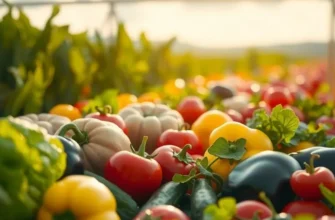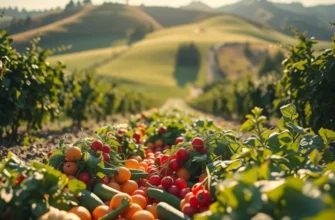Browning meat is a crucial skill every home cook should master. This simple cooking technique not only enhances the appearance of your dishes but also elevates their flavor. Whether you’re a seasoned chef or just starting your culinary journey, understanding how to effectively brown meat can significantly impact your cooking. By following a few straightforward methods, you’ll achieve that delectable caramelized crust that makes any protein shine and your meals unforgettable.
Understanding the Science of Browning

To achieve that tantalizing, perfectly browned crust on your meat, one must first understand the marvel of the Maillard reaction. Named after French chemist Louis-Camille Maillard, this chemical reaction occurs when proteins and sugars in the meat are exposed to heat, typically above 285°F (140°C). The result is an intricate dance of flavors and aromas that elevate dishes to new culinary heights.
When meat is heated, amino acids and reducing sugars begin a complex reaction sequence, leading to the formation of hundreds of different flavor compounds. These compounds further break down to create ever-more complex flavors, which is why a well-browned steak can taste so rich and satisfying.
Temperature is one of the critical factors in ensuring a successful Maillard reaction. For effective browning, you need to ensure your cooking surface is hot enough—a scorching pan is essential. If the temperature is too low, you miss out on browning, instead steaming the meat and losing potential flavor. The choice of fat is also crucial; oils with higher smoke points, such as canola or clarified butter, allow for higher heat without burning, giving you that coveted crust.
Moisture removal is another key element. To prevent steaming, start by thoroughly patting the meat dry with a paper towel before cooking. Removing surface moisture allows the meat’s surface temperature to rise efficiently and enter the Maillard reaction zone faster. Overcrowding the pan can also sabotage browning efforts. Cook in batches if necessary, giving each piece ample space.
Several techniques can help you master browning. Preheating your pan is essential, as is knowing when to turn the meat. Ideally, allow the meat to naturally release from the pan once it has developed a good sear. Frequent turning can disrupt the browning process, as each movement lets out precious heat.
Keeping in mind the ‘why’ behind browning empowers you as a cook. It offers you the analytical tools to troubleshoot problems like an anemic crust or lackluster flavor. Experiment with different heat settings and fats, always ensuring that moisture is minimized and surface temperatures are maximized. Mastering these elements allows you to consistently achieve that deliciously brown crust full of complex flavors.
For further tips on maximizing flavors without adding excessive sodium, you might find inspiration in boosting flavors subtly with flavor boosters without salt. Understanding the science behind your cooking processes ensures that each of your culinary creations is both delicious and delightful.
Practical Techniques for Browning Meat Perfectly

Achieving the perfect brown on a cut of meat is a culinary art that enhances flavor and texture. Here, we’ll explore essential techniques to master this key cooking skill, focusing on beef, chicken, and pork.
Choosing the Right Pan
Start by selecting the right pan. A heavy-bottomed skillet balances and retains heat well, ensuring consistent browning. Cast iron is an excellent choice for this task. Avoid non-stick surfaces; they prevent the accumulation of beneficial fond, those flavorful brown bits left after searing.
Prepping the Meat
The first step is to dry the meat thoroughly using paper towels. Moisture is the enemy of good browning, as it creates steam and can lead to uneven cooking. Season the meat generously with salt and pepper. For beef and pork, you can prepare a simple spice rub to enhance flavor complexity. Ensuring the meat is at room temperature before cooking also promotes even browning.
Setting the Right Heat
Heat your pan over medium-high until it’s hot but not smoking. Add oil with a high smoke point, such as canola or grapeseed, to create a thin layer on the pan’s surface. The right temperature is critical: too cold, and your meat will steam; too hot, and it may burn before browning fully.
Searing the Meat
When placing the meat in the pan, ensure you don’t overcrowd it. Overcrowding leads to steaming instead of browning. Let the meat sit without moving it for several minutes. This creates a crust and allows the Maillard reaction to occur, which is crucial for that deep, rich flavor.
For chicken, consider butterflying thicker cuts like chicken breasts to promote even cooking. For beef or pork, leave a good amount of fat on the meat, as it adds flavor and helps in the browning process.
Timing and Techniques
Cook beef, like a steak, for about 3-4 minutes on each side until a crust forms. Chicken thighs require about 7-8 minutes per side, while pork chops need approximately 5-6 minutes. Use a kitchen timer or the built-in timer on your phone for accuracy.
Testing for Doneness
After achieving a good sear, make sure the meat has reached the desired level of doneness. Use a meat thermometer to check internal temperatures: beef medium-rare should hit 135°F, chicken must reach 165°F, and pork should be 145°F.
Enhance Browning with Additional Techniques
To boost your culinary prowess, consider experimenting with different aromatics like garlic or rosemary added to the pan during the last few minutes of cooking. The fragrant oils release and mingle with the meat juices, enhancing flavor without overpowering.
For additional flavor without salt, you might explore flavor boosters without salt to elevate your dish further.
By mastering these techniques, you can confidently produce dishes with beautifully browned meat, adding depth to home-cooked meals and impressing family and friends.
Final words
Perfecting the browning of meat is an invaluable skill that enhances both the presentation and flavor of your dishes. By understanding the science behind browning and employing practical techniques, you can elevate your cooking and impress your family and friends. Remember, practice makes perfect, so don’t be afraid to experiment in your kitchen. As you become more confident in your browning skills, you’ll not only enjoy cooking more, but you’ll also savor the delicious results of your efforts. Happy cooking!







